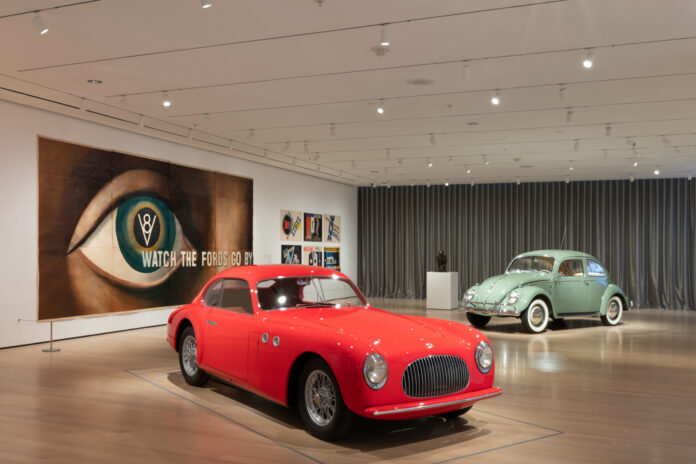Author: Brett Berk
Publisher: Vanity Fair
Date Published: 30 June 2021
Link: https://www.vanityfair.com/style/2021/06/inside-momas-automania-show
Our relationship with the automobile is at an inflection point. The car has provided the freedom and motivation essential to the American promise. It has showcased every significant design and engineering trend of the past 135 years. Yet it is also the source of sprawl and congestion, of roadway deaths, of pollutants responsible for climate change and respiratory ailments. Electric and self-driving vehicles may usher in solutions, but their widespread production and adoption remains a thing of the distant future.
MoMA pioneered the induction of cars into the pantheon of high art under Architecture and Design curator Arthur Drexler, who organized “8 Automobiles” in 1951, which lionized the car as “hollow, rolling sculpture” and celebrated its emerging role in midcentury culture.
But in 1972, MoMA began adding cars to its holdings as design objects—the first American art museum to recognize the automobile as such. “Automania” will display cars from the permanent collection—indoors throughout the show’s run, as well as outdoors in the sculpture garden during the summer months—including a 1948 Cisitalia 202 GT, the museum’s first auto acquisition.
“Automania” recontextualizes MoMA’s automotive acquisitions in light of contemporary understandings, showing them to be, as Galloway says, “immensely pleasurable things to look at” while also taking them down off the plinth and examining how they impacted culture and art.
A few films that play alongside drawings, paintings, and photos by well-known artists, including a lithograph of an early automobile driver terrorizing the streets of Paris by Henri de Toulouse-Lautrec; an Andy Warhol silkscreen of a car crash from his Death and Disaster series; a car hood painted in gynocentric imagery by Judy Chicago; and photos of Ford’s massive River Rouge production plant by Margaret Bourke-White. “Automania” also spotlights less known work, like automotive upholstery samples woven by Anni Albers and designs for a folding steel car seat by Lilly Reich, both prominent 1930s Bauhaus designers.
The cars in the museum are now static objects. They’re devoid of their seductive sound and smell, rendered immobile by the removal of their batteries and vital fluids, lest the presence of these corrosive materials impact the conservation of other items in the permanent collection. They have become beautiful cadavers.
This may be an apt memorial as the individually owned, gasoline-powered automobile moves away from its central role in our national narrative and toward some evanescent future: electrified, self-driving, shared.
Cars, as we can see in this article, have the capacity to be understood as art, if done correctly. From this article at least, it’s interesting to note the idea that traditional gasoline powered automobiles are, for the most part, moving away from their place in society, and will ultimately be replaced by more eco-friendly autonomous vehicles. That being said, in addition to reshaping the view of the vehicle into that of more of a piece of art that should be preserved, this exhibit gives viewers a chance to see the relationships that cars have forged with other elements of society in the past, such as climate change, urban planning, and public health, and encourages them to think critically about what the future of automobiles might look like and the systems they might begin to affect. As designers on this project, we need to be aware of these relationships that cars may have on existing ecosystems and understand the widespread effects that may be brought on by them as we develop a solution.
Berk, B. (2021, June 30). Inside MoMA’s “AUTOMANIA” SHOW. Vanity Fair. Retrieved September 20, 2021, from https://www.vanityfair.com/style/2021/06/inside-momas-automania-show.




